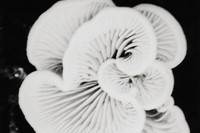In her own words, Daisy Walker talks about the message behind Guardians and Carers of the Natural World, a photo book about the vitality of our relationship to the natural world
In the book Braiding Sweetgrass, Robin Wall Kimmerer compares the tender, reciprocal act of braiding the hair of a loved one with the act of braiding sweetgrass. She writes, “When we braid sweetgrass, we are braiding the hair of Mother Earth, showing her our loving attention, our care for her beauty and well-being, and gratitude for all she has given us.” This affective analogy – reminding the reader that the quality of our lives is interconnected with the land we live on – is also the central thesis of Daisy Walker’s debut photo book, Guardians and Carers of the Natural World. The London-born photographer, who opted to create something of intrinsic value rather than a standard monograph of her practice, does this through photographs of the natural world in its rawest forms: images of snow-capped mountains, horses running through low tides, a shark enclosed by glass at the London Aquarium, a naked body laid down on a field, birds in flight and close-up shots of mushrooms.
These photographs are accompanied by love letters from people who live at one with the planet. “I hope that their experiences and love for the planet will seep into us,” says Walker. “Today, those of us in cities are living lives so divorced from nature that our environment feels far away, an unseen concern we can easily put aside when making daily decisions that could impact it. I want everyone who comes across the book to learn from the interviewees and their reciprocal relationships with the land.”
The project was, in the best of ways, a labour of love for Walker, who spent two years working on it. She would spend hours chatting with people from around the world over Zoom, including an Indigenous midwife from Canada or a field guide from South Africa, learning about their relationship to Nature. “Some people I interviewed were city dwellers who changed their lives drastically to live alongside nature, and others have always lived this life and cannot imagine existing in any other way,” she explains.
Below, in her own words, Daisy Walker tells AnOther about the interconnected relationship between nature and bodies, her experiences with the natural world and how it influenced Guardians and Carers of The Natural World.

“We are all aware that we’re in a climate crisis. We’re aware of the deoxygenated oceans and burning forests, polluted air and dwindling biodiversity, and we know that this crisis threatens our food security and ecosystems. But the facts haven’t changed our daily behaviour. So, instead of relaying the same contextual information to the reader, I wanted to create a body of work that would move people emotionally. I realised that maybe the only way to do that is for people to hear from those who live alongside the natural world in harmony.
“I grew up on the outskirts of London bordering Hertfordshire, so even though I’ve technically always been a London girl, I’ve also always been surrounded by nature. I grew up working with nature from a young age and learned to ride horses when I was two. So my relationship with animals and the rhythm of nature has always existed, and I can’t imagine what it feels like not to have that connection to the natural world. I hope this book can bridge that gap for those who don’t have that relationship or don’t quite have that experience of living in nature. By hearing from the people who do through the love letters to nature in the book, I want to drive home the ideas of how we can recalibrate ourselves to be in tune with the natural world.
“I naively thought that this project would take me six months, and it’s taken two years. So it’s been an evolution of capturing a certain body of work, reassessing whether that tells enough of the story, and then going out and capturing more images. My main idea was to capture key players within the various ecosystems that make up our much broader ecosystem. So things like mushrooms, forests and human bodies evoke this sense of the interconnected web within the project that makes up a larger ecosystem in which we all exist.

“In all my work, the themes of nature and the body are always at the forefront; most of my personal projects focus on those two themes in some capacity. In an exhibition I did about three years ago titled Reunion, I focused on how people reconnected to natural spaces after the pandemic through images that captured the subjects in their rawest states. I think what I’ve understood the older I get is how our bodies and nature are intrinsically linked. The planet is us, and we are the planet. Whether it is a landscape of a body or of nature, they are in essence one and the same.
“As I’m moving to the countryside very soon, I have been looking back at my experience of living and growing up in London and how the people around me function. It’s come at an opportune time with the publication of the book, as what I would love from this project is to give people who live in cities the understanding that, just because you don’t live in nature, it doesn’t mean you can’t have a relationship to it. You just have to make time for it. While man-made green spaces in the city surround us, just 30 minutes away on the train is Epping forest, which is a site of biodiversity. Still, we don’t make an effort to routinely spend time in these spaces to the detriment of our own health and relationship with the world. We need to prioritise our time and commit to reconnecting and being at one with nature.”
Guardians and Carers of the Natural World by Daisy Walker is self-published, and is out now.






